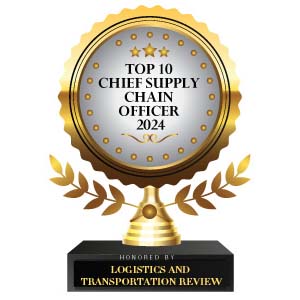Rick McDonald is an accomplished supply chain executive with extensive expertise in global operations within the consumer packaged goods sector. As the former chief supply chain officer for The Clorox Company, he effectively managed procurement, planning, manufacturing, logistics, engineering and quality assurance. Rick also serves as a board advisor for the National Association of Manufacturers, addressing supply chain integrity and resilience challenges. He is recognized as a subject matter expert in supply chain management and leadership, frequently contributing insights on industry podcasts and forums.
A Journey from Manufacturing to Management
Eric has over 40 years of experience in the supply chain industry. He began his career with 10 years at Frito-Lay, working exclusively in manufacturing. This early experience laid the foundation for his expertise in supply chain operations.
For the last 32 years, Eric has been with Clorox, where he has seen the company grow significantly. When he first joined, the company had $1.7 billion in sales, and today, Clorox reports $7.4 billion in sales, reflecting substantial growth during his tenure.
Throughout his time at Clorox, Eric has worked in various areas of the supply chain, including logistics, manufacturing, planning, and procurement. His assignments have taken him around the globe, giving him diverse experience in global operations and supply chain management across different regions and markets.
Economic and Logistical Challenges in Supply Chains
One of the major challenges facing supply chain leaders today is the increasing disruption across various parts of the global supply chain. Logistical disruptions like conflicts in the Middle East and piracy in certain areas are affecting transportation and supply routes. Economic and regulatory challenges in other parts of the world are also contributing to the difficulties supply chain leaders are facing. These global disruptions are some of the most significant challenges in the industry today.
Disruption has also manifested itself in the form of labor and talent shortages, making it difficult for companies to maintain smooth operations.
Many organizations are also striving to digitally transform their processes to become faster, more efficient and focused on consumer needs, which adds another layer of complexity to managing the supply chain.
The Leadership Mindset and Strategies Driving Clorox's Digital Shift
The Clorox Company started a digital transformation journey seven years ago, after recognizing the need to leverage digital assets to address challenges within supply chain and broader organization.








